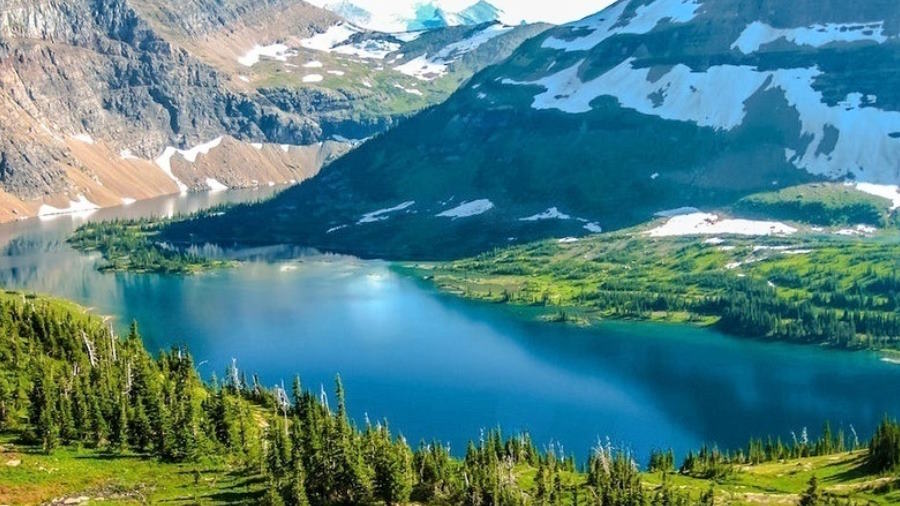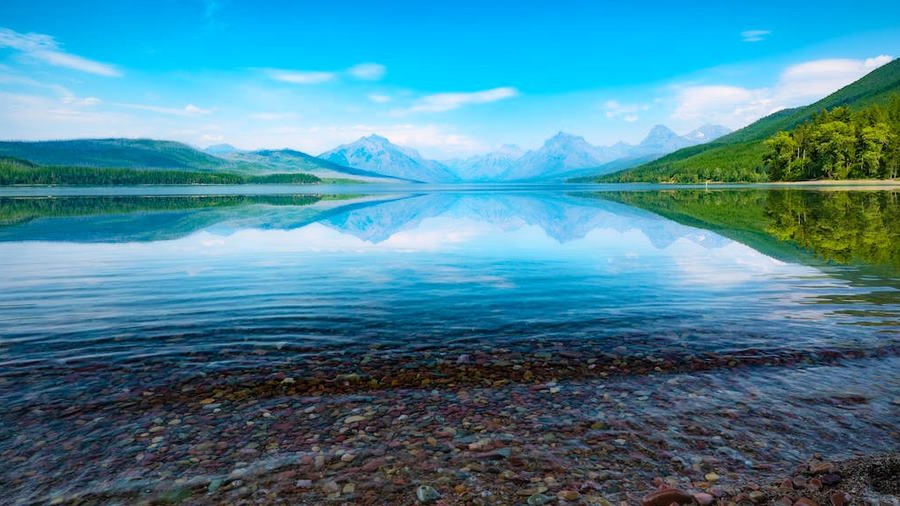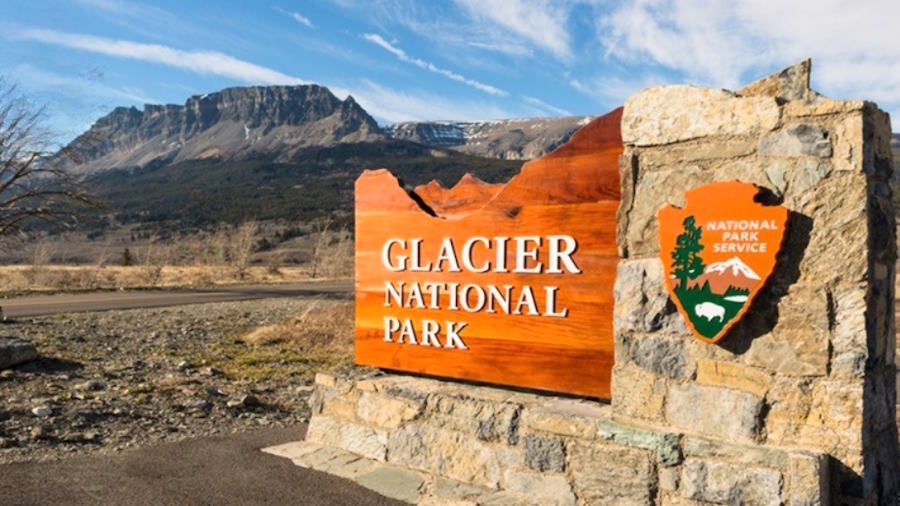Exploring Glacier National Park
Discover the Untamed Beauty: Exploring Glacier National Park
Contents
Nestled in the heart of the Rocky Mountains, Glacier National Park stands as a testament to nature’s grandeur and unbridled beauty. Spanning over a million acres along the Montana-Canada border, this national treasure is a haven for outdoor enthusiasts, wildlife aficionados, and anyone seeking a rendezvous with untamed wilderness.
Glacier National Park is a 1,013,332-acre (4,101 km2) park in the Rocky Mountains of the United States, encompassing portions of Montana’s Glacier, Flathead, and Lake Counties, and Alberta’s Banff National Park in Canada. It is the second-smallest national park in the contiguous United States after Hot Springs National Park.
The park is a dramatic landscape of glacier-carved valleys, alpine meadows, and jagged peaks. It is home to over 700 species of plants and animals, including bears, elk, moose, and mountain goats. Glacier National Park is a popular destination for hiking, camping, fishing, and boating.

Tapestry of Wilderness: Landscape and Biodiversity
-
1. Majestic Mountains and Towering Peaks
Glacier National Park boasts over 700 miles of hiking trails, leading adventurers through pristine landscapes adorned with jagged peaks and crystalline lakes. The iconic Going-to-the-Sun Road offers a breathtaking drive, winding through mountain passes with panoramic views.
2. Glacial Carved Valleys and U-shaped Canyons
Witness the remnants of the last ice age with glacial-carved valleys and U-shaped canyons. Marvel at the geological wonders like the Garden Wall, carved by ancient glaciers, and explore the valleys painted with wildflowers during the summer months.
3. Turquoise Lakes and Mirror-like Waters
The park is adorned with turquoise lakes that reflect the surrounding mountainous splendor. Lake McDonald, the largest lake in the park, is renowned for its crystal-clear waters, providing a serene backdrop for various water activities.
4. Diverse Flora and Fauna
Glacier National Park is a haven for biodiversity. From elusive mountain goats scaling rugged cliffs to grizzly bears roaming alpine meadows, the park is home to a diverse array of wildlife. Birdwatchers can spot over 260 species, including the majestic bald eagle and the elusive peregrine falcon.

Outdoor Adventures: Activities for Every Season
-
1. Hiking and Backpacking
With over 700 miles of trails, Glacier is a hiker’s paradise. From leisurely strolls along the shores of Lake McDonald to challenging treks on the Highline Trail, there’s a trail for every skill level. Backpackers can embark on multi-day adventures, camping under the starlit Montana sky.
2. Scenic Drives and Road Tours
The Going-to-the-Sun Road is a feat of engineering that provides access to the park’s interior, showcasing stunning vistas and wildlife sightings. For those seeking a more relaxed experience, the park offers various scenic drives, including the Many Glacier Road and the Chief Mountain International Highway.
3. Boating and Fishing
The glacial lakes of Glacier National Park offer opportunities for boating and fishing. Rent a kayak or take a boat tour to explore the pristine waters of Lake McDonald or venture to Swiftcurrent Lake for a tranquil paddle. Fishing enthusiasts can try their luck for native trout in the park’s lakes and rivers.
4. Winter Wonderland: Cross-Country Skiing and Snowshoeing
Embrace the winter wonderland that transforms Glacier National Park into a snowy paradise. Cross-country skiing and snowshoeing open up a new world of exploration. Many of the park’s trails become serene pathways for winter enthusiasts, offering a unique perspective of the landscape blanketed in snow.
Cultural and Historical Gems: Going Beyond Nature
-
1. Native American Heritage
The park is steeped in Native American history, with the Blackfeet Nation having longstanding connections to the region. Visitors can explore the park’s cultural history at the Museum of the Plains Indian in nearby Browning, Montana.
2. Historic Chalets and Lodges
Glacier National Park is home to historic lodges and chalets that harken back to a bygone era. The Many Glacier Hotel, known for its Swiss-inspired architecture, and the Lake McDonald Lodge, with its rustic charm, provide a glimpse into the park’s rich history.
3. Red Jammers: Iconic Touring Fleet
Hop aboard the park’s iconic Red Jammer buses for a guided tour along the Going-to-the-Sun Road. These vintage buses, with their roll-back canvas tops, offer a nostalgic and scenic journey through the park’s wonders.
Preserving the Ecosystem: Conservation Efforts
-
1. Glacial Retreat and Climate Change
The park, named for its glacial-carved terrain, is experiencing the effects of climate change. Glacial retreat is evident, emphasizing the urgent need for environmental conservation. Glacier National Park serves as a living testament to the impacts of a warming climate.
2. Wildlife Conservation Initiatives
The park is committed to preserving its diverse wildlife. Conservation initiatives focus on protecting endangered species, such as the grizzly bear and lynx, and maintaining the delicate balance of the ecosystem.
3. Visitor Education and Leave No Trace Principles
Glacier National Park emphasizes visitor education to foster a sense of responsibility for preserving its natural beauty. Leave No Trace principles are promoted to minimize the impact of human activities, ensuring the park remains a pristine wilderness for generations to come.
Planning Your Visit: Tips for a Memorable Experience
The Best Time to Visit Glacier National Park
-
1. Seasonal Considerations
Glacier National Park experiences distinct seasons, each offering a unique experience. Summer is ideal for hiking and boating, while winter transforms the landscape into a snowy wonderland. Plan your visit based on your preferred activities.
2. Accommodations and Reservations
The park offers a range of accommodations, from historic lodges to campgrounds. Given the park’s popularity, especially during the summer months, it’s advisable to make reservations well in advance.
3. Park Entrance Fees and Passes
Entry to Glacier National Park requires a fee, with options for individual or vehicle passes. Consider purchasing an America the Beautiful Pass for access to multiple national parks and federal recreational lands.
4. Guided Tours and Ranger Programs
Enhance your experience with guided tours and ranger-led programs. These informative sessions provide insights into the park’s natural and cultural history, adding depth to your visit.
A Wilderness Unveiled
Glacier National Park is not merely a destination; it’s an immersion into the raw beauty of nature. As the glaciers recede and the landscape evolves, the park remains a sanctuary for those seeking solace in the untamed wilderness. From the rugged mountain peaks to the pristine lakes, Glacier National Park beckons adventurers to explore, learn, and connect with a landscape that transcends time—a wilderness unveiled, awaiting your discovery.
Glacier National Park U.S. National Park Service
Visit Montana
Wikipedia Glacier National Park
